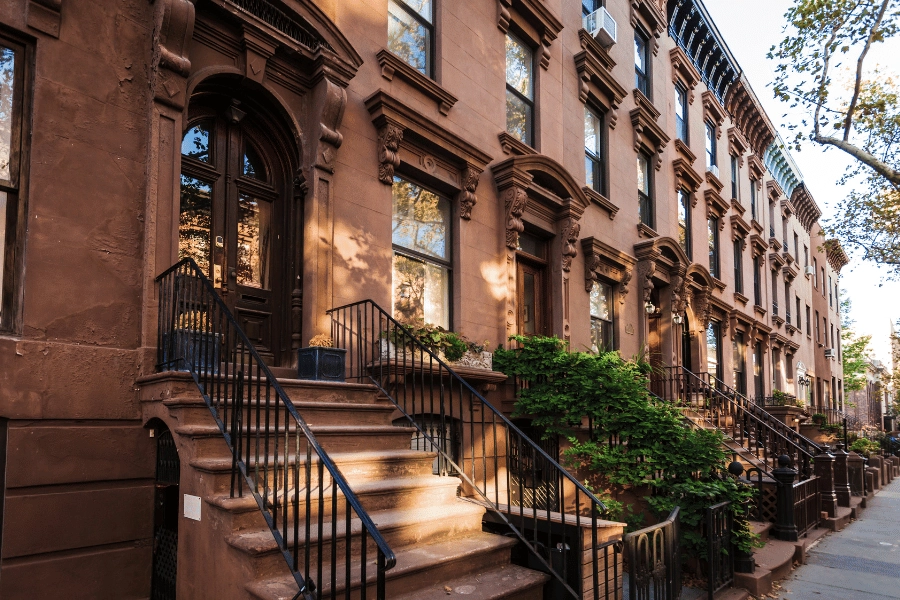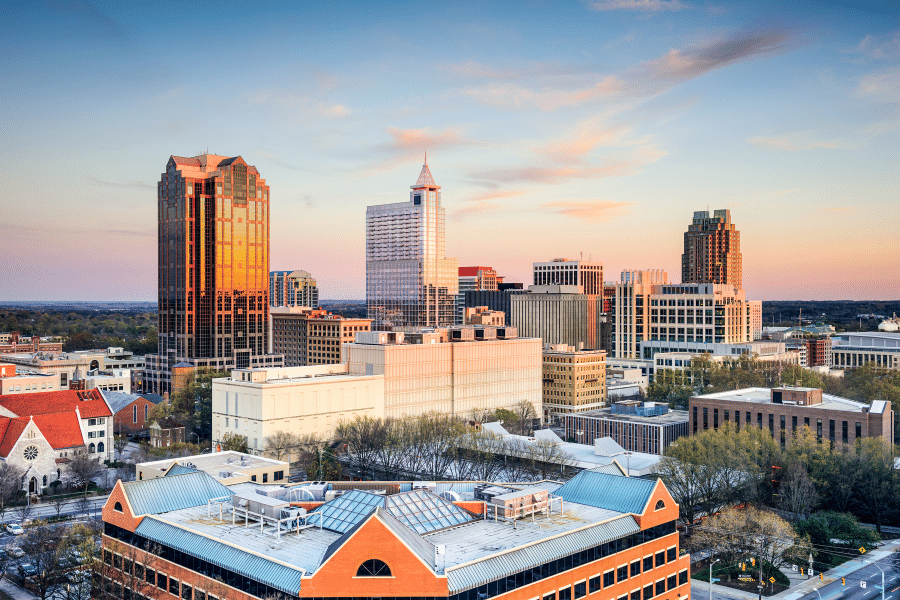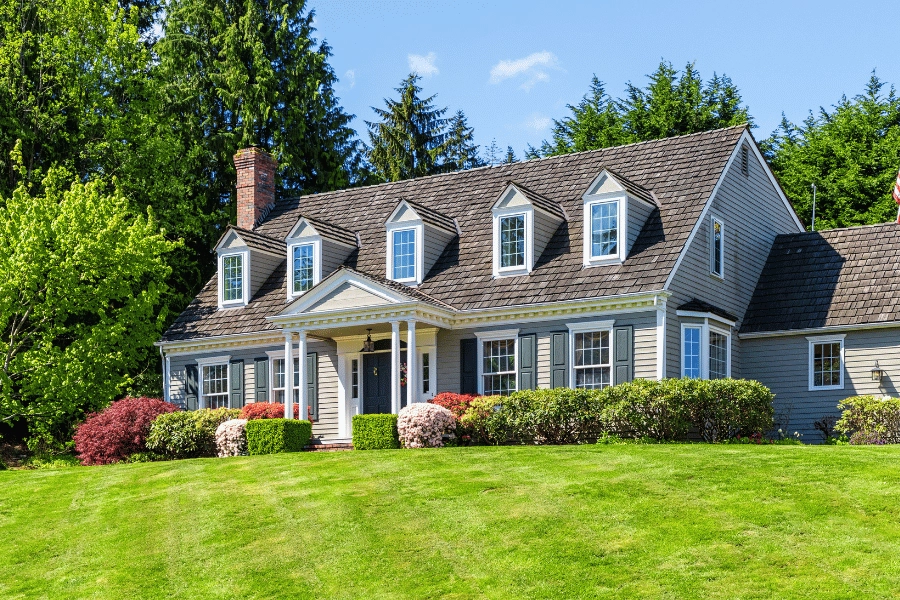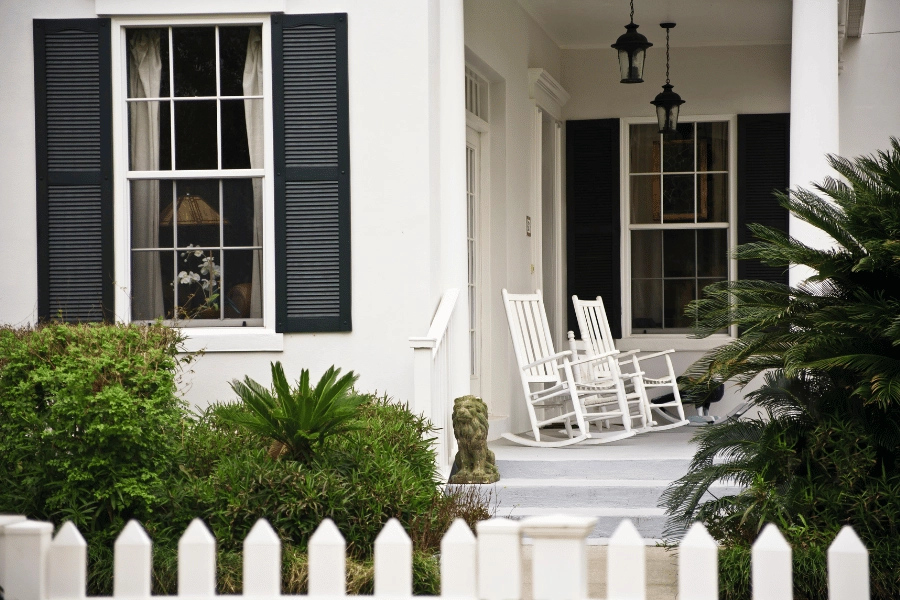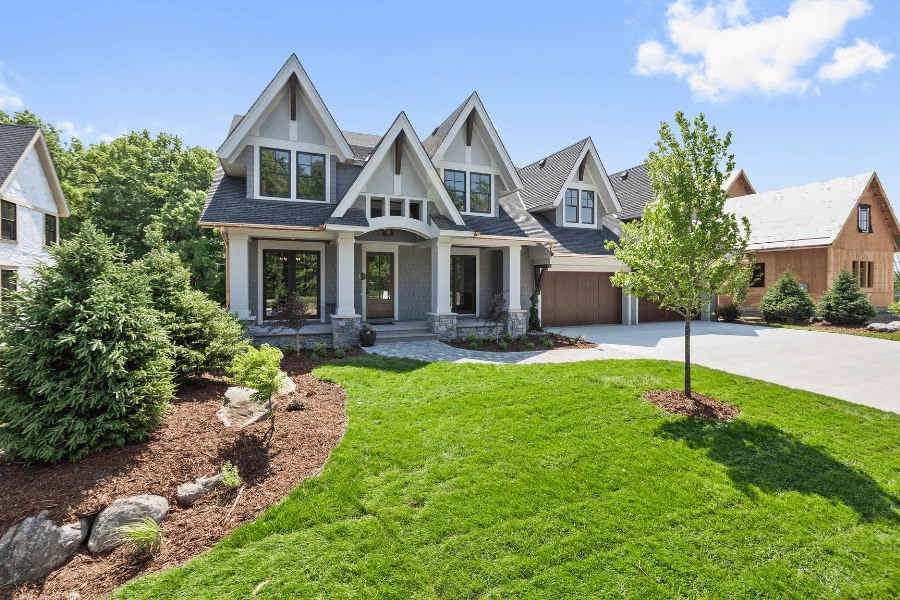What is a Brownstone?
What is a brownstone home? Here is everything you need to know about brownstones, including their pros and cons.
It is essential to pick a home type that fits all your wants and needs. There are many different home styles, and people are often unaware of how they differ.
When exploring residential architecture options, you may have encountered the term "brownstone" and wondered what distinguishes these homes from others.
If you are interested in this unique architectural style and urban living, this comprehensive guide will explore everything you need to know about brownstones, including their presence in the Raleigh area.
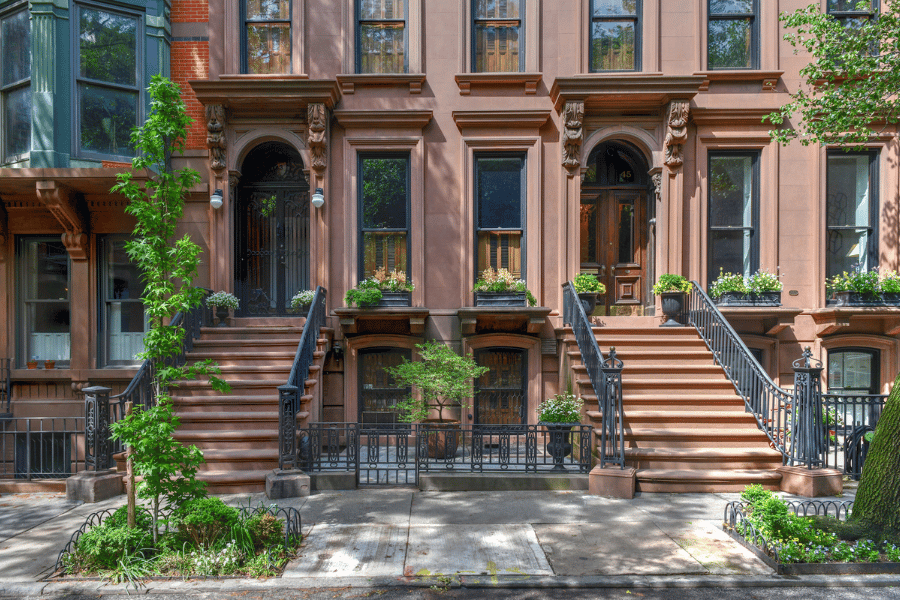
1. Understanding Brownstones: Definition and Origins
A brownstone is a type of townhouse characterized by its distinctive brown-colored sandstone facade. The term "brownstone" derives from both the building material and the architectural style it represents. The brownstone material itself is sandstone with a characteristic reddish-brown hue, created by dissolved iron oxides within the stone.
This building material gained popularity in the early 19th century. It was primarily quarried from Connecticut, New Jersey, and Massachusetts. The stone was prized for being "freestone," meaning it could be cut freely in any direction, making it ideal for detailed architectural work and ornamentation.
2. History of the Brownstone
If you've ever walked the streets of New York City and been mesmerized by the tall and beautiful rowhouses, you were most likely looking at a Brownstone. Brownstones reached their golden age during the mid-1800s to early 1900s, becoming the sign of urban sophistication and middle-class prosperity.
Concentrated initially in major East Coast cities like New York, Boston, and Philadelphia, these homes represented the height of fashionable urban living. Brownstone mainly comprises small quartz and feldspar combined with clays, iron oxides, and sometimes calcite or silica.
Brownstone quickly became popular because it was easy and affordable to cut and carve with steam-powered machines. The brownstone material was typically sourced from the Portland Brownstone Quarry in Connecticut, put on barges, and set down the Connecticut and Hudson Rivers until it reached New York.
Although they became popular as urbanization increased and the material became more accessible, brownstone is unreliable. It's soft and close-grained, likely to crack and crumble. Brownstones also have the reputation of not holding up with severe weather and exposure, and needing to be restored.
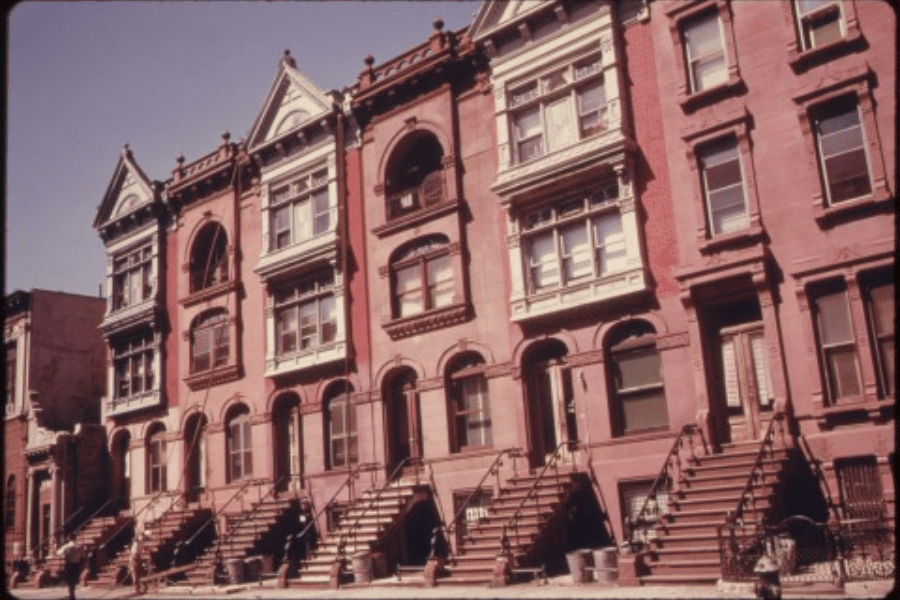
3. Types of Brownstones
Traditional Brownstone
These are the classic 19th-century designs with Italianate features, elaborate stonework, and multiple stories. They often include basement levels and feature the iconic front stoop.
Revival Brownstone
Built in the 20th century, these homes emulate the traditional brownstone aesthetic but may incorporate modern construction techniques and materials while maintaining the characteristic appearance.
Modern Brownstones
Contemporary interpretations of the brownstone style maintain the material and general appearance while incorporating modern amenities and updated layouts.
Converted Brownstones
Originally, single-family homes were divided into multiple units or apartments while maintaining the exterior brownstone character.
4. What Classifies a Home as a Brownstone?
For a home to be considered an actual brownstone, it must meet several specific criteria:
Material Requirements
The most essential characteristic is the brownstone exterior. The exterior must be clad in the distinctive brown sandstone that gives these homes their name. Without this material, a home would be classified as a townhouse.
Architectural Style
Brownstones typically feature Italianate architectural elements, including tall, narrow windows, elaborate cornices, decorative brackets, and symmetrical facades. The design emphasizes vertical lines and ornate detailing.
Structure
Most brownstones are multi-story townhouses, typically three to five stories tall, with a narrow footprint to maximize urban lot usage.
Stoop
Another defining feature of traditional brownstones is a characteristic raised front entrance with steps leading to the main door, known as a "stoop. "

5. Brownstones in the Raleigh Area
The Raleigh real estate market has embraced brownstone-style living, though with some regional adaptations. While North Carolina doesn't have the extensive historical brownstone neighborhoods found in Northeast cities, the area has developed modern brownstone communities that capture this architectural style's aesthetic and lifestyle appeal.
Trinity Brownstones represents Raleigh's most prominent brownstone development, located strategically within two miles of the Lenovo Center. This community offers the brownstone aesthetic with modern amenities and construction, catering to buyers who desire the classic architectural style with contemporary conveniences.
The brownstone-style homes throughout Raleigh's many neighborhoods reflect the city's growing urbanization and the appeal of vertical living in prime locations. These developments often feature the characteristic narrow footprint and multi-story design while adapting to local building codes and climate considerations.
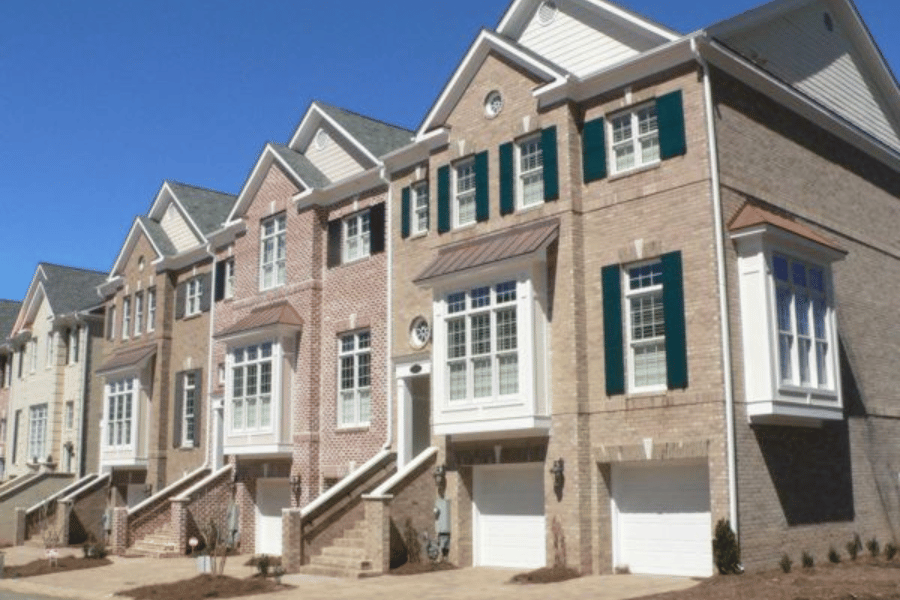
When considering a brownstone-style home in the Raleigh area, evaluate your lifestyle priorities and long-term goals. These homes are ideal for buyers who appreciate architectural character, urban convenience, and unique living spaces. The vertical layout and efficient use of space make them particularly suitable for professionals, empty nesters, or small families who prioritize location and character over extensive outdoor space.
Consider your maintenance preferences, parking needs, and desired community level. Modern brownstone developments in Raleigh offer the aesthetic appeal of traditional brownstones while incorporating sought-after amenities and construction standards.
6. Pros of Brownstone Living
Efficient Use of Space
Brownstones are spacious, especially if you own and live in the entire Brownstone. However, even if you only have one unit in the Brownstone, it often spans the whole floor or multiple floors.
The vertical design of a brownstone maximizes living space on smaller lots, making them ideal for urban environments where land is scarce.
Architectural Character
Brownstones offer distinctive charm and historical character that sets them apart from conventional suburban homes. The tall windows, ornate details, and classic proportions create an elegant living environment.
Investment Potential
Brownstones often retain value well due to their unique character and desirable urban locations.
Great Location
Brownstones are typically in friendly, tight-knit neighborhoods. The units are also near restaurants, shopping, entertainment, and employment centers.
Brownstone neighborhoods typically foster a strong sense of community, with neighbors living nearby and sharing similar architectural aesthetics.
7. Cons of Brownstone Living
Cost Factors
Brownstones, particularly in desirable urban locations, often command premium prices due to their unique character and location advantages. Brownstones are also older buildings, so the cost of repairs can be increased.
Limited Outdoor Space
The narrow lot design means limited yard space, which may not suit families prioritizing outdoor living areas.
Parking Limitations
Urban brownstone locations may have limited parking availability, though modern developments like Trinity Brownstones address this with integrated garage spaces.
Noise Considerations
The proximity to neighbors and urban locations can result in higher noise levels than suburban single-family homes.
8. Brownstone Maintenance
Since original brownstones are older, they tend to require more upkeep. Some upkeep can be costly, and some can be preventative. Both are extremely important to preserve the building and keep it pristine.
Facade Maintenance
Regular brownstone exterior cleaning and sealing are essential to prevent water damage and preserve the material's appearance. Professional cleaning every few years helps maintain the stone's characteristic color and prevents deterioration.
Roof Maintenance
Roof damage must be taken care of right away. The flat or low-pitched roofs standard in brownstone design require regular inspection and maintenance to prevent water damage.
Maintain the Structure
The multi-story design requires attention to foundation stability, load-bearing walls, and stair systems. Regular inspections help identify potential issues before they become significant problems.
Water can penetrate walls, windows, doors, and other structures through cracks in the system. It's important to repair cracks so they don't weaken the building structure over time.
Window Care
The tall, narrow windows typical of brownstones require regular maintenance of frames, sashes, and surrounding stonework. Proper weatherproofing is crucial to prevent moisture infiltration.
Upgrade Systems
In older brownstones, updating electrical, plumbing, and HVAC systems while preserving architectural integrity requires skilled professionals familiar with historic construction methods.
9. Brownstones vs. Townhomes: Understanding the Difference
The terms brownstone and townhouse get thrown around loosely, and many homes are called brownstones even though they are not. Some real estate agents sometimes get it wrong, so thoroughly research before renting or owning one.
While brownstones are technically a type of townhouse, there are important distinctions between the two. A townhouse is a type of home constructed in a row of two or more attached units.
A townhouse on a lot shares at least one common wall with an adjacent unit and is generally a tall and narrow home with three or more floors. The benefit of a townhouse is that they tend to have lower purchase prices than single-family homes, but they offer less privacy and outdoor space.
While brownstones and townhouses are often confused or lumped together, fundamental differences exist. The primary difference lies in the exterior material. A brownstone must have a brownstone facade, while townhomes can be constructed with various materials, including brick, vinyl siding, stucco, or other stone types.
Other differences include:
Architectural Style
Brownstones typically feature specific Italianate architectural elements, while townhomes can encompass various architectural styles from Colonial to Contemporary.
Design Elements
Traditional brownstones feature characteristic elements like raised front stoops, ornate cornices, and tall, narrow windows, while townhomes may or may not include these features.
Location
Brownstones are traditionally associated with urban environments, while townhomes can be found in suburban, urban, and rural settings.
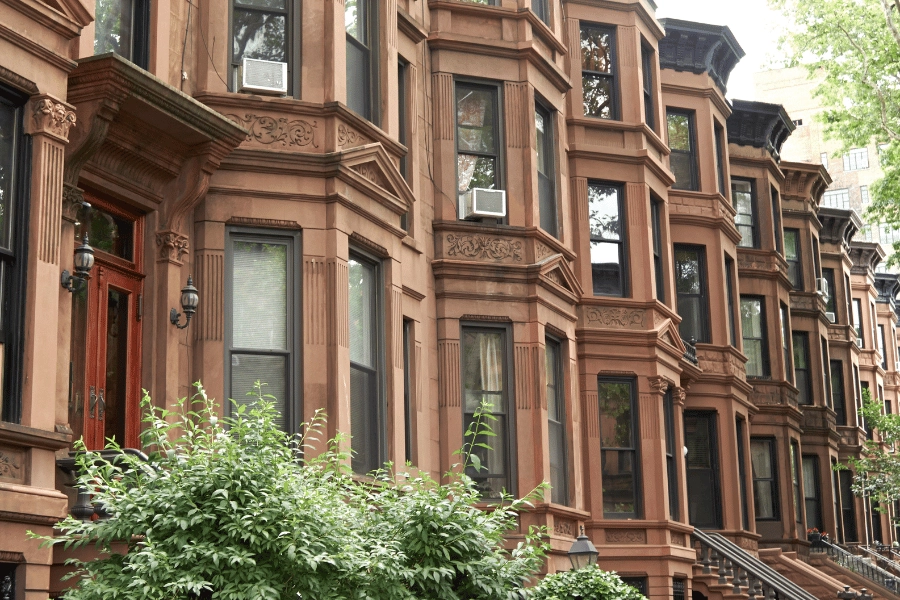
Methodology
Data was sourced from Merriam-Webster and the Brownstone Project to determine the characteristics and history of the brownstone home type.
FAQs
What makes a home a brownstone?
A brownstone is characterized by its facade of brown sandstone, giving the building its name. While the interior structure of a brownstone is usually brick, the outer layer is its most distinguishable characteristic.
Why are brownstones expensive?
Brownstones have a higher price tag due to their limited supply, high demand in urban centers, and historical significance in desirable neighborhoods.
Final Thoughts on Brownstones
Brownstones are truly one-of-a-kind homes that have existed for decades. The charm and historic feel they bring to big cities is something you can't find everywhere.
Brownstones represent a unique housing option that combines historical architectural character with efficient urban living. While traditional brownstones are primarily found in older East Coast cities, modern interpretations like those in Raleigh bring this classic style to contemporary homebuyers.
Understanding the characteristics, benefits, and maintenance requirements of brownstone living can help you decide whether this distinctive housing style aligns with your lifestyle and preferences.
Whether you're drawn to the architectural charm, urban convenience, or investment potential, brownstones offer a unique alternative to conventional suburban housing.
If you are moving to Raleigh and are interested in exploring brownstone options in the Raleigh area or have questions about these distinctive homes, our experienced team is ready to help you through the process and discover the perfect property for your needs.
Contact Raleigh Realty today to learn more about available properties and schedule a tour of available homes for sale. Our expert agents understand the unique characteristics of these architectural gems and can help you find the perfect brownstone home.
